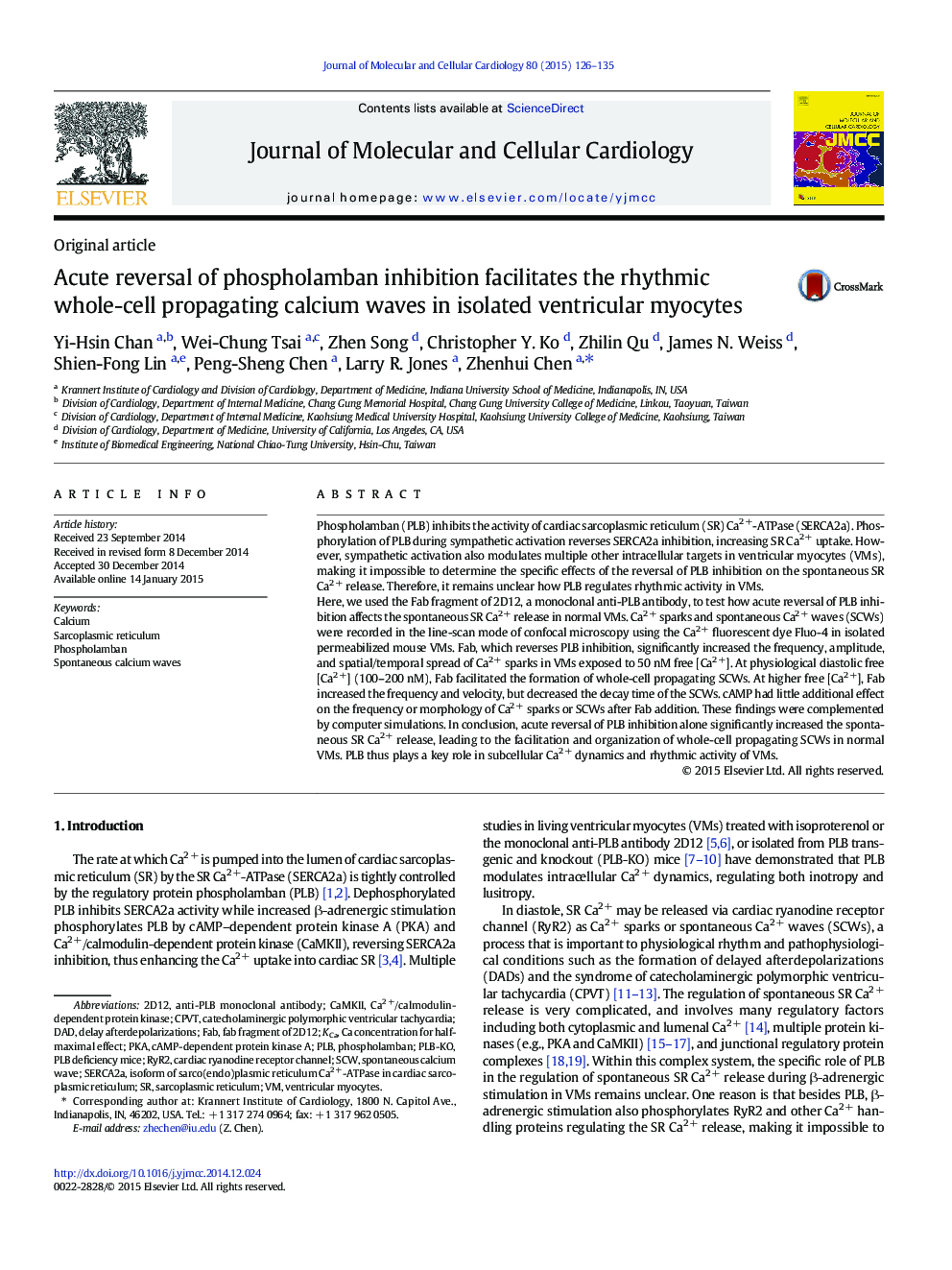| Article ID | Journal | Published Year | Pages | File Type |
|---|---|---|---|---|
| 8474394 | Journal of Molecular and Cellular Cardiology | 2015 | 10 Pages |
Abstract
Here, we used the Fab fragment of 2D12, a monoclonal anti-PLB antibody, to test how acute reversal of PLB inhibition affects the spontaneous SR Ca2Â + release in normal VMs. Ca2Â + sparks and spontaneous Ca2Â + waves (SCWs) were recorded in the line-scan mode of confocal microscopy using the Ca2Â + fluorescent dye Fluo-4 in isolated permeabilized mouse VMs. Fab, which reverses PLB inhibition, significantly increased the frequency, amplitude, and spatial/temporal spread of Ca2Â + sparks in VMs exposed to 50Â nM free [Ca2Â +]. At physiological diastolic free [Ca2Â +] (100-200Â nM), Fab facilitated the formation of whole-cell propagating SCWs. At higher free [Ca2Â +], Fab increased the frequency and velocity, but decreased the decay time of the SCWs. cAMP had little additional effect on the frequency or morphology of Ca2Â + sparks or SCWs after Fab addition. These findings were complemented by computer simulations. In conclusion, acute reversal of PLB inhibition alone significantly increased the spontaneous SR Ca2Â + release, leading to the facilitation and organization of whole-cell propagating SCWs in normal VMs. PLB thus plays a key role in subcellular Ca2Â + dynamics and rhythmic activity of VMs.
Keywords
Related Topics
Life Sciences
Biochemistry, Genetics and Molecular Biology
Cell Biology
Authors
Yi-Hsin Chan, Wei-Chung Tsai, Zhen Song, Christopher Y. Ko, Zhilin Qu, James N. Weiss, Shien-Fong Lin, Peng-Sheng Chen, Larry R. Jones, Zhenhui Chen,
